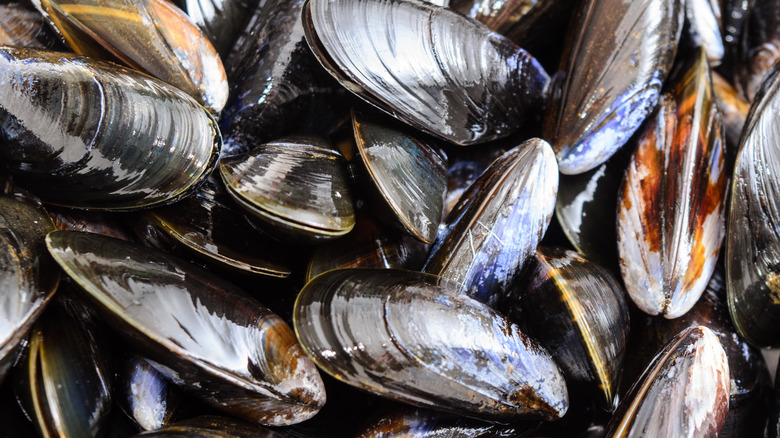Ina Garten's Foolproof Method To Avoid Gritty Mussels
As the seasons change and start to cool down, shellfish lovers are rejoicing. An old wives tale says that shellfish like mussels, clams, and oysters, should only be eaten in months that contain the letter R, aka fall through spring (via Jenkins & Sons Fish and Game). This practice is based in part on the "red tide." Red tide brings toxic algae that turn the water a shade of crimson, and occurs during the warmer summer months in the waters where shellfish breed. Luckily, it's extremely unlikely that you'll encounter a poisonous piece of shellfish today, due to enhanced refrigeration, freezing, and seafood storage techniques. According to Live Science, half of all fish today is farmed, instead of wild-caught. Farmed fish is significantly less likely to be affected by toxic algae. With this in mind, shellfish is generally widely available throughout the year, though BBC Good Food notes that the peak season for mussels is October through March.
Mussels are very versatile and can be eaten with fries, cooked in a savory broth, or served in a spicy bowl of cioppino soup. Celebrity chef Ina Garten has a recipe for her special take on the classic fisherman's stew, which uses mussels, cod, shrimp, and scallops. In it, she shares her simple tip for cleaning the mussels to ensure no sandy bits land in your teeth.
Use your baking ingredients to clean mussels
Even though Epicurious notes that store-bought farmed mussels typically won't be as gritty or dirty as their wild-caught counterparts, it's still important to give the mussels a thorough cleaning. No one wants to bite into their unctuous, brothy mussel and get a mouthful of grit. On an episode of her Food Network show "Barefoot Contessa," Ina Garten shared her secret to cleaning mussels (via YouTube). Garten adds all-purpose flour — a versatile ingredient — to a large bowl of water where the mussels are soaking. The mussels should soak for 30 minutes, or until the sand has leached out. At this point, the mussels need to be drained and given another good rinse.
Once your shellfish is nice and clean, they are ready to be cooked. It's important to note that if a mussel shell is open, it needs to be discarded and not eaten. According to PEI mussels, if you tap on an uncooked mussel shell and it does not close, it needs to be thrown away. You don't want to risk getting sick from eating one that will not close. With Garten's flour-soaking method, it's safe to say your mussels will have a smooth texture and delicious, grit-free flavor.

